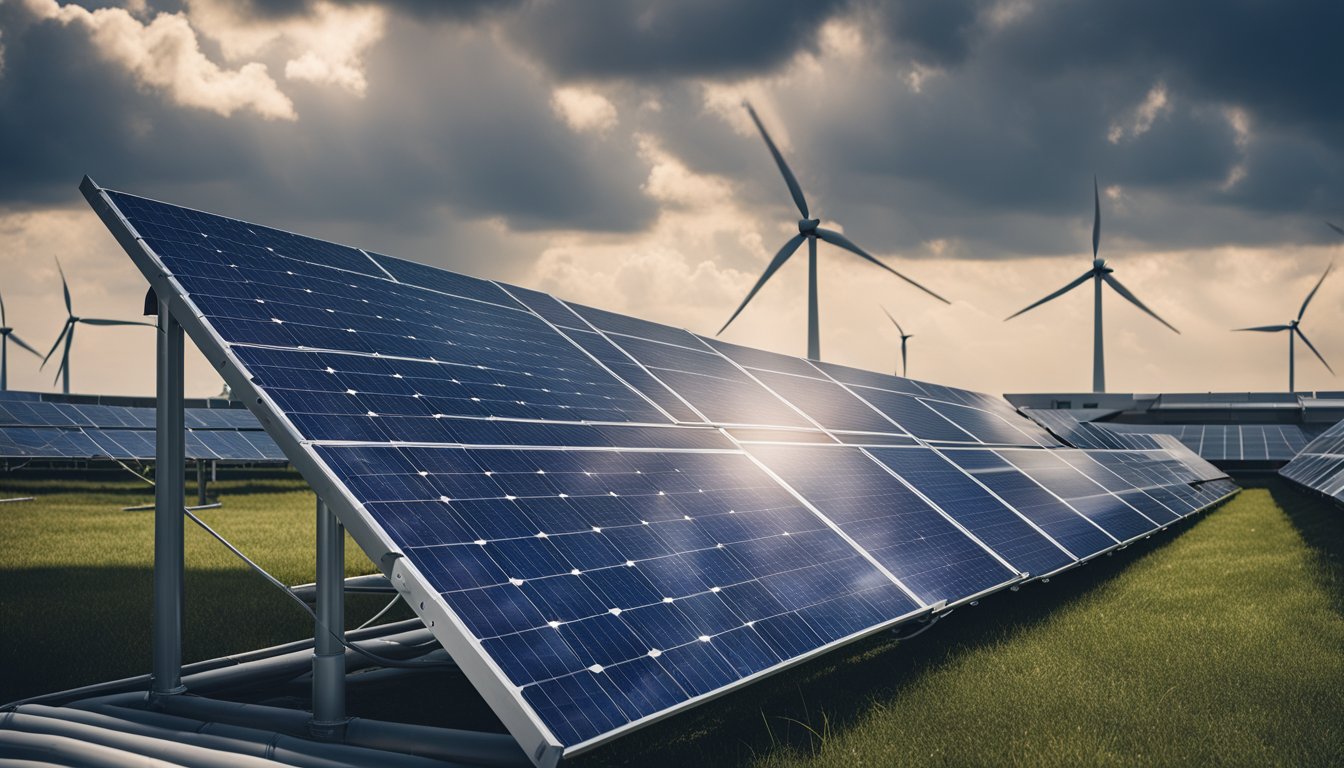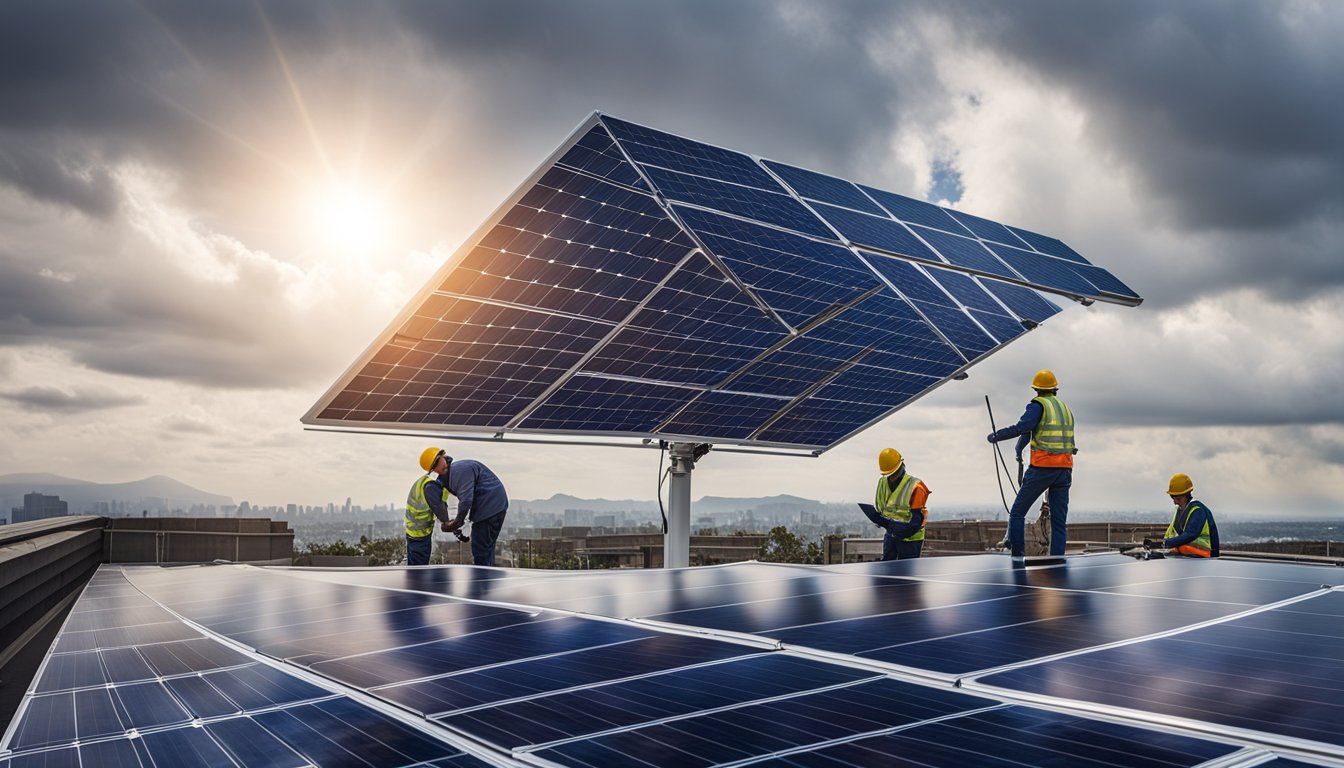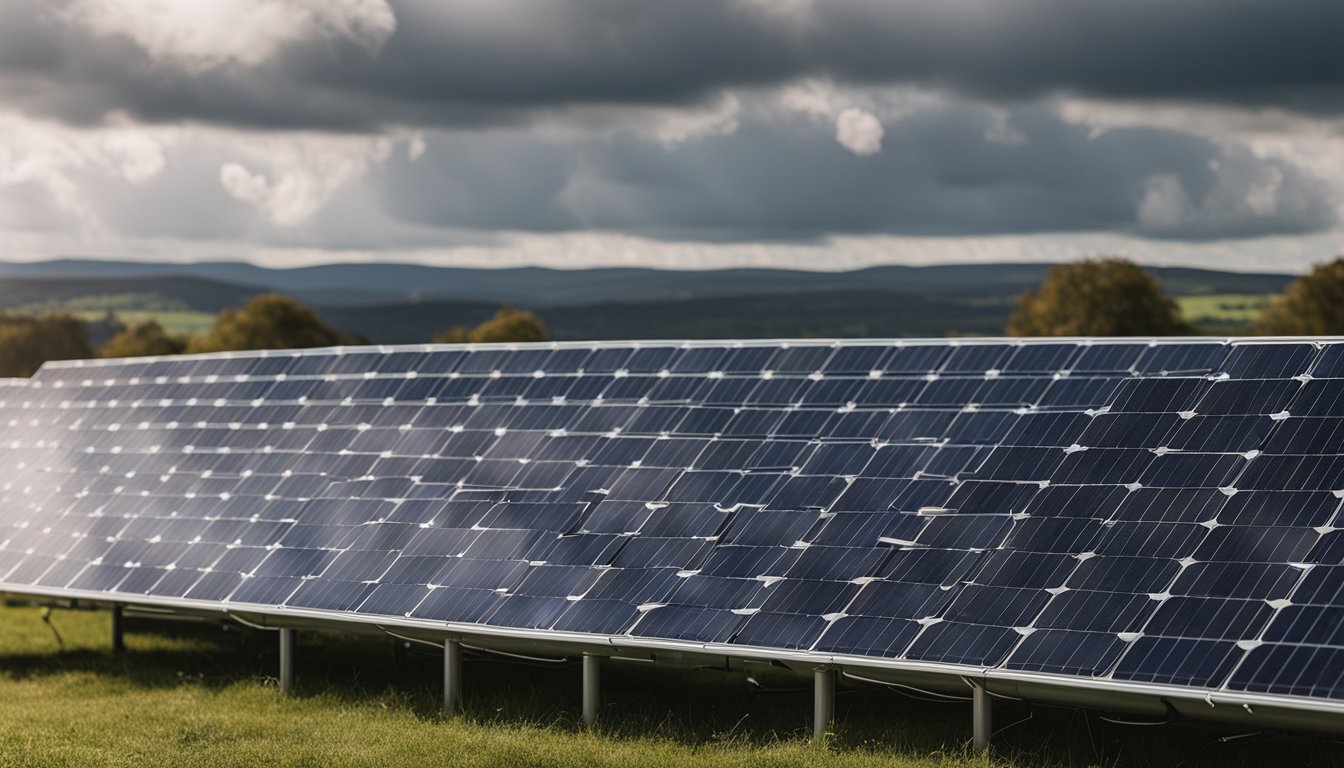Late updated: 02 Apr 2025 14:04
Written by: Eleanor Hartman
Maximise Solar Efficiency In Cloudy British Climates: Proven Strategies and Tips
Harnessing solar energy in the British climate is a reliable venture, even when faced with frequent cloudy weather. Our main goal is to ensure that solar panels operate at peak efficiency despite the characteristic overcast skies. British weather might often be dreary, but modern solar technology is designed to capture sunlight in various conditions, making renewable energy a practical solution for homeowners and businesses.

We recognise the importance of quality installation and maintenance to achieve optimal performance in solar power systems under cloudy conditions. Choosing high-efficiency solar panels and placing them correctly can significantly enhance energy capture. Regular upkeep ensures these systems continue to perform well, even when the sun isn’t shining its brightest.
Despite common misconceptions, solar panels in the UK are effective and can be a crucial component of a sustainable energy strategy. By addressing common questions and concerns, we offer insights into how solar technology fits seamlessly into British climates, promising consistent energy generation and environmental benefits.
Key Takeaways
- Solar panels work efficiently in cloudy British climates.
- Proper installation and maintenance are key to high solar efficiency.
- Solar energy is a viable option in UK weather conditions.
Maximising Solar Panel Efficiency Under Cloudy Conditions
Maximising solar panel efficiency in cloudy climates requires an understanding of solar technology, the impact of geographical location, and the use of innovative technologies. By considering these factors, we can improve the performance of solar panels in low-light conditions.
Understanding Solar Panel Technology
Solar panel technology turns sunlight into electricity. Different types of panels handle cloudy conditions differently. Monocrystalline panels are known for their high efficiency and perform relatively well in low-light conditions.
Polycrystalline panels, while generally less efficient, are cost-effective. They can still capture diffuse sunlight on cloudy days. Bifacial solar panels leverage indirect sunlight by using both sides to capture more energy. These choices make a difference in energy capture and solar panel efficiency.
Photovoltaic modules often have an anti-reflective coating. This increases light absorption, which is essential for energy generation on cloudy days. Understanding panel technology helps us choose the best options to maximise energy production.
Importance of Geographical Location and Weather Patterns
Our geographical location heavily influences solar panel performance. The UK's frequent cloud cover means panels must handle changing weather. Seasonal shifts affect solar efficiency as well. In winter, when daylight is scarce, low-light conditions are common.
Sites with open skies still receive diffuse sunlight. This type of light can be harnessed using modern solar panels. Choosing an ideal location with minimal shading is crucial. Positioning panels to capture indirect sunlight ensures more consistent output throughout the year. Integrating maximum power point tracking can optimise energy capture by adjusting the panel angle for the best light absorption.
Innovative Technologies for Maximising Energy Capture
Advancements in technology offer solutions for boosting solar efficiency in cloudy weather. Tracking systems adjust panel positions based on sunlight direction. These systems increase energy generation by making the most of available light.
Bifacial panels can double the energy capture. Anti-reflective coatings enhance light absorption. Innovations like these increase solar efficiency by allowing panels to function better in varied weather conditions.
Technologies such as maximum power point tracking help optimise panel performance. They adjust panel output to ensure we utilise all available sunlight. Employing these innovative systems can lead to more reliable solar energy production.
Installation and Maintenance for Optimal Performance

Effective installation and diligent maintenance are crucial components for maximising solar energy generation, even in cloudy British climates. Ensuring that solar panels are optimally placed and well-maintained guarantees maximum power output, long-term savings, and enhances the overall benefits of solar energy systems.
Proper Installation Practices for Cloudy British Climates
In cloudy British climates, maximising energy output begins with strategic installation. Panels should be placed at an angle that optimises exposure to diffused sunlight. We must ensure that they face true south to capture sunlight effectively throughout the day.
Quality installation also involves securing panels to prevent movement from strong winds or extreme weather conditions. Using durable mounts and employing professional installers ensures that the system remains robust over time. These practices not only optimise performance but also contribute to the long-term durability of the solar installation.
Enhancing Energy Production with Storage Solutions
To mitigate inconsistent energy production caused by frequent cloud cover, integrating energy storage solutions is beneficial. Battery storage allows us to store excess solar electricity generated during sunnier periods for use during cloudy days or at night.
Implementing a battery storage solution enhances our system's efficiency and reliability. It ensures a consistent power supply and maximises the utilisation of solar panels. This approach leads to significant long-term savings and a stable electricity generation model, effectively bolstering the performance of our solar energy system.
Ongoing Maintenance and Real-World Applications
Regular maintenance is critical for ensuring consistent solar panel performance. This includes routine cleaning to remove debris or layers of dust that can impede energy output. We should also conduct periodic inspections to check for any physical damage, such as cracks, which could affect power output.
Monitoring system performance allows us to identify any drop in energy efficiency promptly. Timely maintenance ensures that our solar energy system operates at peak performance, offering sustained energy production and maximising the benefits of solar over time. It empowers us with a reliable and efficient source of renewable energy, tailored to meet the demands of our environment.
Frequently Asked Questions

Efficiency of solar panels can be enhanced even in Britain's cloudy conditions through strategic placement and technology advancements. Understanding their performance in overcast weather and year-round viability can help maximise solar output.
How can solar panel efficiency be optimised in overcast British conditions?
We can maximise efficiency by ensuring panels are oriented to capture maximum sunlight. Regular maintenance also plays a crucial role in keeping them clear of debris and optimising performance. High-quality inverters can also be valuable in improving efficiency.
What are the performance characteristics of solar panels during the UK's cloudy weather?
Solar panels remain functional and can produce 20%-30% of their capacity in full cloud cover. Modern solar technologies use diffused sunlight effectively, ensuring continued energy production even without direct sunshine.
What measures can be taken to improve solar panel output on days with heavy cloud cover in Britain?
Implementing battery storage systems can help store energy for use during low production periods. Additionally, using panels with higher efficiency ratings and incorporating smart energy management systems can enhance overall output.
Can solar panels be effective throughout the year in the British climate, which is known for its cloudiness?
Yes, solar panels can be effective year-round in the UK. Seasonal variations affect output, with shorter days in winter producing less electricity. However, advancements in solar technology and optimised systems help maintain reasonable efficiency.
What technologies are best suited to enhance solar panel efficiency in typically cloudy British environments?
Monocrystalline panels, known for higher efficiency, are particularly suited to cloudy conditions. Micro-inverters offer better management of panel output discrepancies, while bifacial panels utilise reflected light, making them ideal for such climates.
What limitations should be considered when installing solar panels in Britain's cloud-prone regions?
One key limitation is the reduced energy generation potential during prolonged overcast periods. Roof orientation, shading, and panel quality must be considered to mitigate these limitations. Costs associated with installation and maintenance also play a role in feasibility.